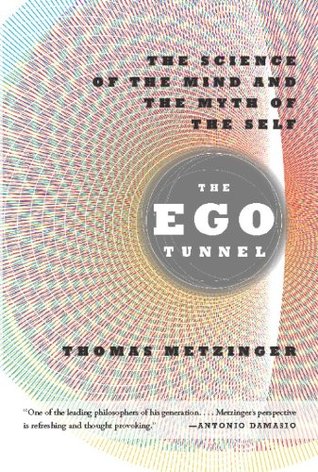More on this book
Community
Kindle Notes & Highlights
Started reading
June 27, 2025
What you feel in the rubber-hand illusion is what I call the content of the phenomenal self-model (PSM)—the conscious model of the organism as a whole that is activated by the brain. (“Phenomenal” is used here, and throughout, in the philosophical sense, as pertaining to what is known purely experientially, through the way in which things subjectively appear to you.) The content of the PSM is the Ego.
(M. Botvinick & J. Cohen, “Rubber Hand ‘Feels’ Touch That Eyes See,” Nature 391:756, 1998.) Figure by Litwak illustrations studio, 2004.
these are the so-called out-of-body experiences, or OBEs. OBEs are a well-known class of states in which one undergoes the highly realistic illusion of leaving one’s physical body, usually in the form of an etheric double, and moving outside of it. Phenomenologically, the subject of experience is located in this double. Obviously, if one seriously wants to understand what the conscious self is, these experiences are of great philosophical and scientific relevance.
Could they be created in the lab?
Federal Institute of Technology in Lausannne, who was the first scientist to trigger an OBE by directly stimulating the brain of a patient with an electrode.
Our conscious model of reality is a low-dimensional projection of the inconceivably richer physical reality surrounding and sustaining us. Our sensory organs are limited: They evolved for reasons of survival, not for depicting the enormous wealth and richness of reality in all its unfathomable depth. Therefore, the ongoing process of conscious experience is not so much an image of reality as a tunnel through reality.
Whenever our brains successfully pursue the ingenious strategy of creating a unified and dynamic inner portrait of reality, we become conscious. First, our brains generate a world-simulation, so perfect that we do not recognize it as an image in our minds. Then, they generate an inner image of ourselves as a whole.
We do not see the window but only the bird flying by. We do not see neurons firing away in our brain but only what they represent for us.
But no such things as selves exist in the world. A biological organism, as such, is not a self. An Ego is not a self, either, but merely a form of representational content—namely, the content of a transparent self-model activated in the organism’s brain.
Our theories about phenomena change, but the phenomena stay the same. A beautiful rainbow continues to be a beautiful rainbow even after it has been explained in terms of electromagnetic radiation.
Our conscious experience of the world is systematically externalized because the brain constantly creates the experience that I am present in a world outside my brain. Everything we know about the human brain today indicates that the experience of being outside the brain, and not in a tunnel, is brought about by neural systems buried deep inside the brain. Of course, an external world does exist, and knowledge and action do causally connect us to it—but the conscious experience of knowing, acting, and being connected is an exclusively internal affair.
We want large-scale coherence spanning many areas of the brain and flexibly binding many different contents into a conscious hierarchy: the letters into the page, the page into the book, the hand holding the book into your bodily self, and the self sitting in a chair in the room and understanding the words.
Antoine Lutz and his colleagues at the W. M. Keck Laboratory for Functional Brain Imaging and Behavior at the University of Wisconsin studied Tibetan monks who had experienced at least ten thousand hours of meditation. They found that meditators self-induce sustained high-amplitude gamma-band oscillations and global phase-synchrony, visible in EEG recordings made while they are meditating.9 The high-amplitude gamma activity found in some of these meditators seems to be the strongest reported in the scientific literature.


